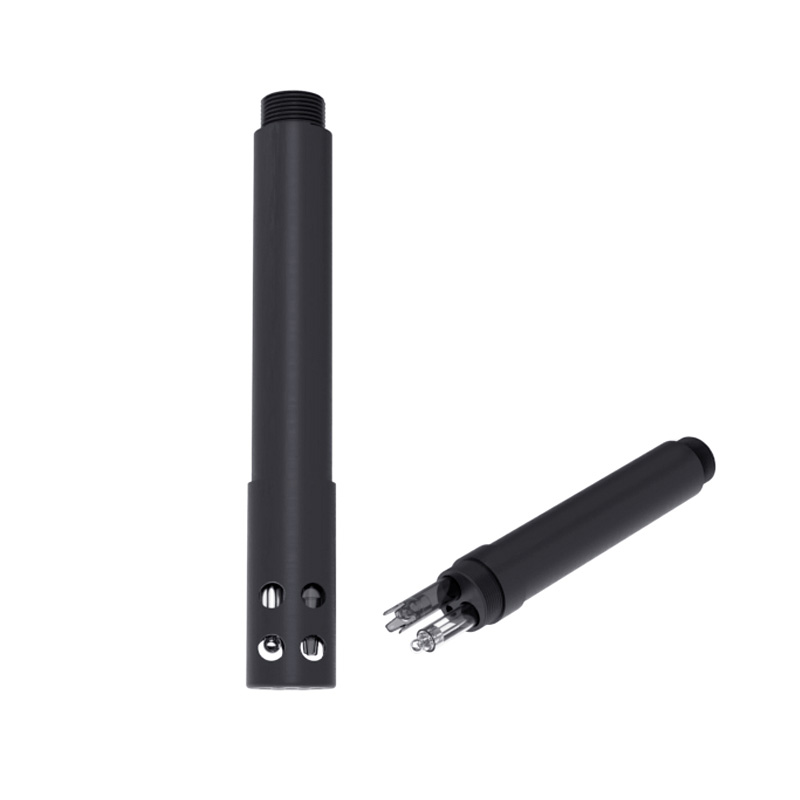Tianqiong Sensor IOT Technology Co., Ltd
Sales Manager:Ms. Emily Wang
Cel,Whatsapp,Wechat:+86 15898932201
Email:info@fengtutec.com
Add:No. 155 Optoelectronic Industry Accelerator, Gaoxin District, Weifang, Shandong, China

Sales Manager:Ms. Emily Wang
Cel,Whatsapp,Wechat:+86 15898932201
Email:info@fengtutec.com
Add:No. 155 Optoelectronic Industry Accelerator, Gaoxin District, Weifang, Shandong, China

Model:FT-S4
Brand:tianqiong
1.Residual Chlorine Sensor application environment description
Residual Chlorine Sensor is used for drinking water, recycled water and swimming pool water and measures residual chlorine very quickly.Residual Chlorine Sensor is used in drinking water treatment plants, canning plants, drinking water distribution networks, swimming pools, cooling circulating water, water quality treatment projects, etc.where continuous monitoring of the residual chlorine content in the aqueous solution is required.
2.Technical parameters of Residual Chlorine Sensor
| PH sensor | ||
| Range and resolution | 0~14(PH) | 0.01 |
| Accuracy | ±0.1PH; ±0.3℃ | |
| Residual chlorine sensor | ||
| Range and resolution | 0~5.00 mg/L | 0.01 |
| Accuracy | ±5% of reading; ±0.3℃ | |
| Communication method | RS485 (MODBUS-RTU) | |
| Housing material | ABS | |
| Temperature compensation | Automatic temperature compensation | |
| PH Compensation | Automatic PH compensation | |
| Cable length | Standard 5 meters | |
| Power supply voltage | 12-24VDC (0.3W@12V) | |
| Waterproof grade | IP68 | |
| Installation method | Flow pool installation, 3/4NPT | |
3.Electrical connection of Residual Chlorine Sensor
1.Installation
Use a supporting flow cell to install the sensor and the flow cell to ensure that the sensor measurement part is placed near the water inlet of the flow cell.Try not to face the water outlet directly to ensure the flow rate is stable.It is recommended that the flow rate be controlled at 30-60L/h to ensure the accuracy of the test.
2.Electrical connection
The cable is a 4-core twisted pair shielded wire, with line sequence definition:
Red cable—Power cable (12~24VDC)l
Black line - ground line (GND)
Blue Line—485A
Green Line—485B
Note: The color of the cable may vary slightly depending on the production batch, and the specific color of the cable is subject to the silk screen printing.
Before powering on, carefully check the wiring sequence to avoid unnecessary losses caused by wiring errors.
4.Maintenance and maintenance
1.PH electrode
When used for the first time or not after a long time, the sensitive bulb and reference fluid should be immersed in 3.3 mol/L KCI solution for more than 2 hours.When using, wash and wipe dry with deionized water (or distilled water) to prevent impurities from being brought into the liquid to be tested.
The terminal part should be kept clean and dry.When the sensor is not in use, it should be cleaned.Insert the protective cover with 3.3mol/L KCI solution, or insert the sensor into a container with 3.3mol/L KCI solution.
Check whether the terminals are dry.If there are any stains, wipe them with anhydrous alcohol and continue to use them after drying.The sensor should avoid long-term soaking in deionized water, protein solutions, strong acid and alkali solutions, and acid fluoride solutions, and prevent contact with silicone grease.The sensor that has been used for a long time may become translucent or contain deposits.At this time, it can be washed with dilute hydrochloric acid and rinsed with water.
When the sensor has a long service life, it can be calibrated and corrected by matching the instrument.When the sensor is maintained and maintained by the above method, it means that the sensor has failed.Please replace the sensor.
2.Residual chlorine electrode
The new electrode and the long-standing electrode need to be activated before use, and the sensor is left to stand in tap water for 24 hours.If the return value is inaccurate, you need to do the following:
Calibrate the sensor by zero point and slope
Return to factory inspection
The Portable Weather Station is a lightweight monitoring device that integrates the functions of meteorological data observation, recording, and analysis. Its core positioning is to meet the meteorological monitoring needs in various mobile scenarios and emergency situations. With practicality and c...
Rainfall is one of the important water cycle links in nature. Accurate measurement of rainfall is of great significance for agricultural irrigation, urban flood control, water resource management, meteorological research and other fields, as it provides key data support for decision-making in these...
Gridization is a technical means that divides the geographical space into several regular or irregular grid units. Through independent monitoring, analysis, and management of each grid, it achieves refined management of the entire region. In the field of environmental monitoring, grid-based manageme...
In daily meteorological monitoring, Tianqiong Technology's Portable Weather Station has become a reliable "meteorological monitoring expert" around people with its solid performance.It boasts comprehensive monitoring capabilities. The device integrates a variety of high-precision senso...